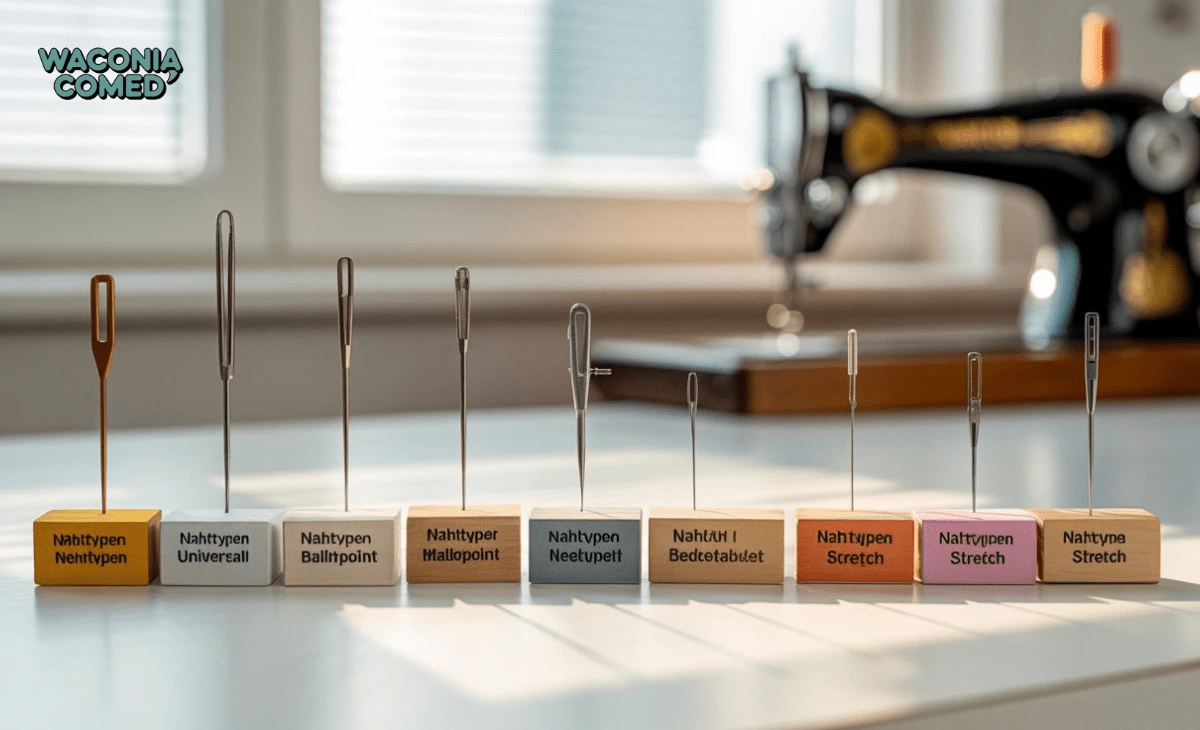Nahttypen are the foundation of fashion, sewing artistry, and textile design. Every seam serves a specific function whether it’s strength, flexibility, decoration, or simply holding fabric pieces together. Anyone who dives into sewing quickly realizes the variety of seam types, each with its own pros and cons. In fashion, art, and everyday tailoring, they are indispensable. Understanding the different nahttypen is essential for creating high-quality, durable, and visually appealing pieces.
What are Nahttypen?
Nahttypen refers to the different ways of joining fabric pieces with needle and thread. Each seam type varies in form, strength, and appearance. While some are purely decorative, others focus on function and stability.
The choice of seam depends on factors such as fabric type, required flexibility, visual appeal, and the level of stress the garment will face. A formal gown requires a different seam technique than sportswear or home textiles.
You might also like : Pyntekvister
Why are Nahttypen important?
Seams determine not only how long a garment lasts but also how comfortable and stylish it feels. Choosing the wrong seam may cause fraying, breaking, or discomfort.
In fashion and art, seams are more than just construction details. They are creative design tools. Decorative seams can transform a simple piece into an elegant statement.
The Most Important Nahttypen
Straight Stitch (Steppnaht)
The straight stitch is the most commonly used seam. It’s strong, simple, and versatile, perfect for cotton and linen fabrics. In design, it can be both functional and decorative.
Chain Stitch (Kettenstich)
This elastic seam works best for knitted or stretchy fabrics like jersey and sportswear. Its chain-like pattern makes it both durable and attractive.
Overlock Seam (Overlocknaht)
This seam trims, sews, and finishes fabric edges in one go, preventing fraying. It’s essential in professional garment making, done with special overlock machines.
Zigzag Stitch (Zickzacknaht)
The zigzag seam is flexible and widely used on stretch fabrics. It also secures fabric edges and can be decorative in embroidery and embellishments.
Double Stitch (Doppelnaht)
Known for extra durability, this seam is used in jeans, workwear, and heavy-duty textiles.
Safety Stitch (Sicherheitsnaht)
Made of two parallel seams, this type adds reinforcement, making it ideal for children’s clothes and outdoor garments.
Flatlock Seam (Flatlocknaht)
This seam lies flat and smooth against the skin, perfect for sportswear and performance clothing.
Hem Seam (Saumnaht)
Used to finish fabric edges neatly, hem seams are crucial for dresses, skirts, and trousers.
Decorative Stitch (Ziernaht)
These seams add artistic detail. They can be simple or complex, turning garments into unique design statements.
Blind Stitch (Blindstichnaht)
Almost invisible, this seam is used in formalwear and evening dresses where hidden finishes are essential.
Benefits of Different Nahttypen
Durability: Double and safety stitches provide long-lasting strength.
Flexibility: Zigzag and chain stitches stretch with fabric movement.
Aesthetics: Decorative and blind stitches add elegance.
Efficiency: Overlock and flatlock seams speed up garment production.
Challenges with Nahttypen
Beginners often struggle to pick the right seam for a fabric. Handling advanced machines like overlockers can be tricky, and incorrect thread tension or stitch length may compromise seam quality.
Nahttypen in Fashion and Art
In fashion, seams are not just functional; they’re design elements. A simple dress can be elevated with contrasting decorative stitches. In textile art, quilting, patchwork, and embroidery rely heavily on seam creativity.
Step-by-Step: Choosing the Right Seam
- Check the fabric – Is it stretchy or firm?
- Consider wear and tear – Will the piece face heavy use?
- Define the purpose – Decorative or functional?
- Adjust your machine – Needle, thread tension, and stitch length.
- Test first – Always sew a sample before the final garment.
Tips for Perfect Seams
Use quality thread to avoid breakage.
Replace needles often to prevent fabric damage.
Choose shorter stitches for delicate fabrics.
Always finish edges to prevent fraying.
Common Mistakes in Nahttypen
A mismatched seam and fabric often cause problems. For example, zigzag seams on denim may snap easily. Incorrect tension also leads to uneven or puckered seams.
You might also like : Markiseteppe
FAQs about Nahttypen
What is the strongest seam?
The double stitch and safety seam are the most durable, often used in denim and workwear.
Which seam works best for stretchy fabric?
Zigzag and chain stitches provide elasticity and flexibility.
Which seam is invisible?
The blind stitch is nearly invisible, ideal for formalwear.
Which seam is easiest for beginners?
The straight stitch is simple, versatile, and beginner-friendly.
What is an overlock seam used for?
It trims and prevents fraying while sewing fabric edges.
Can decorative seams also be functional?
Yes, many decorative stitches reinforce fabric while adding style.
Conclusion: Mastering Nahttypen for Creative Sewing
Nahttypen are much more than just seams. They embody craftsmanship, design, and functionality. In both fashion and art, the right seam transforms ordinary fabric into extraordinary creations.
By mastering different seam types, you ensure your garments are durable, comfortable, and beautiful. Whether you’re sewing for function or fashion, experimenting with seams is the best way to grow your skills.
Ready to try? Start your next sewing project today and discover the endless possibilities of nahttypen.

